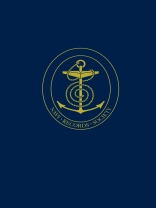Charts the career of Admiral of the Fleet Sir James Somerville between 1936 and 1945 when he exercised the longest continuous sea command of any British Flag Officer.
This collection of documents, drawn from papers held in the Churchill Archives Centre at Churchill College, Cambridge and supplemented by others from a variety of wider sources, charts the career of Admiral of the Fleet Sir James Somerville from his joining the Mediterranean Fleet as Rear Admiral (Destroyers) in 1936 to his return from Washington at the end of 1945.
In the interim he had exercised one of the widest varieties of high command and the longest continuous sea command of any British Flag Officer of the Second World War, despite being on the retired list on the grounds of ill health from July 1939 until August 1944. Entering the Navy in 1897, Somerville became a wireless specialist during the First World War. In the 1930s he supported the development of radar, with radar pioneer Robert Watson-Watt dubbing him ‘the foster-father of naval radar.’
His first sea-going appointment as a Flag Officer coincided with the outbreak of the Spanish Civil War and over the following two years he was generally the Senior British Naval Officer off Spain’s Mediterranean coasts, a role which taxed his diplomatic skills to the full. Promoted Vice Admiral in 1937, he was posted C-in-C, East Indies Station in October 1938 but was invalided home less than a year later.
In May and June 1940 he was a key figure in operation DYNAMO, the evacuation of Allied forces from France, occasionally deputising for Admiral Ramsey. Following the fall of France he returned to the Mediterranean in command of the newly created Force H where his first task was to handle the negotiations over the future of the powerful French naval units in Algerian ports. When these finally broke down he executed the British government’s instructions to destroy the French fleet in Mers-el-Kebir from which only one significant unit, the battlecruiser Strasbourg, escaped.
Sommerville continued to command Force H until January 1942, running numerous convoys to Malta and onwards towards Egypt, raiding Genoa, Sardinia and Sicily and launching the Swordfish torpedo attacks which crippled the Bismarck and led to her subsequent destruction. Over this period he developed an understanding of the problems and possibilities of naval aviation unrivalled among contemporary British flag officers.
That experience proved vital when, in February 1942, following the loss of Prince of Wales and Repulse, he was appointed to command the newly formed Eastern Fleet. For the next two years, he had responsibility for defending the sea lanes to India, the Gulf, Suez and Australasia, initially playing cat and mouse with overwhelmingly powerful Japanese forces and latterly harrying and bombing their bases. His final wartime appointment, from November 1944 to December 1945, was as Head of the British Admiralty Delegation in Washington where he fought continual battles with the formidable and reputedly Anglophobic Chief of Naval Operations, Fleet Admiral Ernest King, defending and promoting Britain’s role in the final stages of the war in the Pacific.
表中的内容
Chronology of the Life and Career of Admiral of the Fleet Sir James Somerville
Part I: Flag Commands and Other Active Service, April 1936-June 1940
Part II: Force H, June 1940-January 1942
Part III: The Eastern Fleet, January 1942-August 1944
Part IV: The British Admiralty Delegation, Washington, D.C., January 1944-December 1945
List of Documents and Sources
Index












